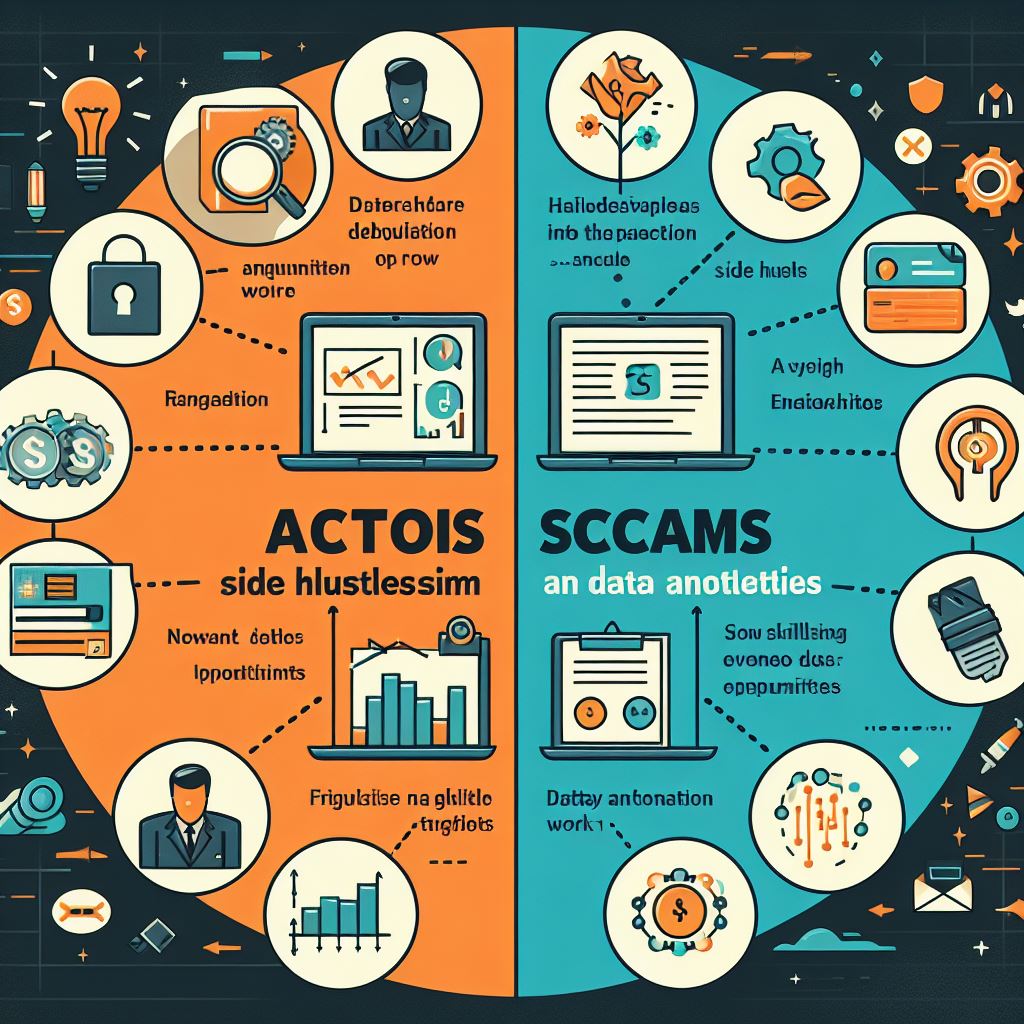Introduction
Are you looking to earn some extra cash on the side? Data annotation work might just be the answer! But before diving in, it’s crucial to understand what this job entails and whether it’s a legitimate side hustle or potentially a scam. Let’s explore the ins and outs of data annotation work together.
How does someone get started in data annotation?
Curious about diving into the world of data annotation? Getting started in this field may seem daunting at first, but it’s actually quite simple. One way to begin is by researching companies that offer data annotation opportunities. Look for platforms like Amazon Mechanical Turk or specialized agencies that provide these services.
Once you’ve identified potential opportunities, make sure to familiarize yourself with the specific requirements and guidelines set by each platform or company. Some may require certain skills or training, while others might be more open to beginners.
In addition, it’s essential to understand the different types of data annotation tasks available, such as image tagging, text categorization, or sentiment analysis. This will help you narrow down your options and choose projects that align with your interests and expertise.
Remember to stay proactive and persistent in seeking out opportunities and honing your skills in data annotation – consistency is key!
How much money does the work pay?
Curious about the earning potential of data annotation work? Let’s dive in. The pay for data annotation roles can vary depending on factors like experience, complexity of tasks, and the company you’re working with. Some platforms offer a fixed rate per task completed, while others may pay hourly or based on output volume.
Generally speaking, entry-level positions might offer lower compensation compared to roles that require specialized skills or domain knowledge. It’s essential to do your research and understand the payment structure before committing to any data annotation project.
While some annotators may earn a decent side income from this type of work, it’s unlikely to replace a full-time job unless you dedicate significant time and effort. Remember that rates can differ widely across different industries and companies within the data annotation field.
What is data annotation?
Data annotation is the process of labeling data to make it understandable for machines. It involves adding metadata or tags to raw data, such as images, text, or videos. This labeled data is then used to train machine learning models. Data annotators play a crucial role in this process by accurately categorizing and tagging each piece of information.
Imagine you have a collection of images showing different animals – a data annotator would label each image with the corresponding animal name like “dog” or “cat.” These annotations help algorithms recognize patterns and make predictions based on the labeled information.
Data annotation requires attention to detail and consistency to ensure high-quality training datasets for machine learning models. It’s a fundamental task that forms the backbone of AI technology, enabling advancements in various fields from healthcare to self-driving cars.
What is the role of a data annotator?
Data annotators play a crucial role in the world of AI and machine learning. Their primary responsibility is to label, tag, or annotate data to help train algorithms and models. This process involves meticulously analyzing and categorizing various types of information such as images, text, audio, or video.
By accurately labeling datasets, data annotators contribute to improving the accuracy and performance of artificial intelligence systems. They need a keen eye for detail and an understanding of specific guidelines set by the project they are working on.
Data annotation tasks can vary from simple image tagging to more complex object detection or sentiment analysis. Annotators must follow instructions carefully to ensure consistency across the dataset.
Data annotators play a vital role in shaping the future of technology by providing high-quality labeled data essential for training AI models effectively.
What is an example of annotated data?
When it comes to data annotation, examples can help illustrate its significance. Imagine a dataset containing images of cats and dogs for a machine learning project. Annotated data in this context would involve labeling each image as either “cat” or “dog.” This annotation enables the algorithm to recognize patterns and learn to differentiate between the two animals accurately.
Similarly, in natural language processing tasks, annotated data could involve tagging parts of speech in sentences or identifying sentiment in text. By annotating the data with these labels, machine learning models can be trained to perform specific tasks more effectively.
In essence, annotated data serves as the foundation upon which AI algorithms are built. It provides crucial context and structure that guides machines in understanding and interpreting information accurately.
Does data annotation pay well?
Data annotation work can be a legitimate side hustle for those looking to earn extra income, but it’s crucial to approach opportunities with caution. While some projects may offer decent pay rates, others could turn out to be scams. It’s essential to thoroughly research the company offering the data annotation work and ensure they have a good reputation.
Data annotation can be a rewarding way to make money on the side if you’re detail-oriented and enjoy working with data. Just remember always to prioritize your safety and financial well-being when considering any side hustle opportunity.



